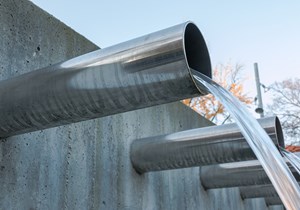Arizona’s Infrastructure Gets a “C”, Water Barely Makes the Grade
(UC) — The Arizona Section of the American Society of Civil Engineers (ASCE) released the 2020 Report Card for Arizona’s Infrastructure awarding the state an overall grade of ‘C’.
Civil Engineers graded a total nine categories with the state’s drinking water and wastewater infrastructure coming in almost last in the report both receiving a C- grade. Roads were the only category graded lower.
Drinking water (C-) utilities have addressed resilience needs by focusing on drinking water supplies such as state rivers, natural recharge into groundwater aquifers and treated wastewater. Residents have also reduced their water consumption— each using an average of 52,925 gallons per year, compared to the average American consumption of 64,240 gallons.
Aviation infrastructure received the highest grade of a ‘B,’ citing that Arizona’s three largest airports have all received recent major investments, including a 20-year, $38 billion Comprehensive Asset Management Plan at Phoenix Sky Harbor International Airport (PSHIA).
Arizona’s bridges (B+) also received high marks with only 1.6% of its 8,320 bridges being classified as in poor condition in 2019, far fewer than the national average of 7.5%.
Roads received the lowest grade in the report, earning a ‘D+.’ Arizona’s 25-year statewide federal, state and local investment needs total $98.3 billion, with an estimated investment gap of $30 billion.
The report finds that of the 159 levee systems, which span 387 miles in Arizona and protect 345,000 Arizona residents and close to $50 billion in property, only 8% are inventoried in the National Levee Database and have been screened for condition analysis.
Additionally, Arizona’s dam safety budget is less than $1 million annually, which is primarily available to conduct inspections.
The report also includes recommendations to raise the grades, such as:
- Assert greater economic independence from federal funding sources through implementing measures such as a vehicles miles traveled charge or user fee for electric cars.
- Jurisdictions who own and maintain levees must work together with the Arizona Department of Water Resources (DWR), FEMA and USACE to complete the National Levee Database for both federal and non-federal levees. An important step is to fully fund The National Levee Safety Program.
- Develop a comprehensive, statewide asset database and an examination rubric to establish infrastructure priorities and improve coordination of asset management across all agencies.
Civil engineers graded aviation (B), bridges (B+), dams (C-), drinking water (C-), levees (C-), rail (C), roads (D+), transit (C) and wastewater (C-).
Related News
From Archive

- Glenfarne Alaska LNG targets late-2026 construction start for 807-mile pipeline project
- U.S. water reuse boom to fuel $47 billion in infrastructure spending through 2035
- $2.3 billion approved to construct 236-mile Texas-to-Gulf gas pipeline
- Major water pipe break in Puerto Rico hits over 165,000 customers
- Potomac River Tunnel project enters construction phase beneath Washington, D.C.
- Pennsylvania American Water launches interactive map to identify, replace lead water service lines
- Trump's tariffs drive $33 million cost increase for Cincinnati sewer project
- Utah city launches historic $70 million tunnel project using box jacking under active rail line
- Tulsa residents warned after sewer lines damaged by boring work
- Fatal trench collapse halts sewer construction in Massachusetts; two workers hospitalized




Comments